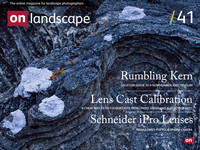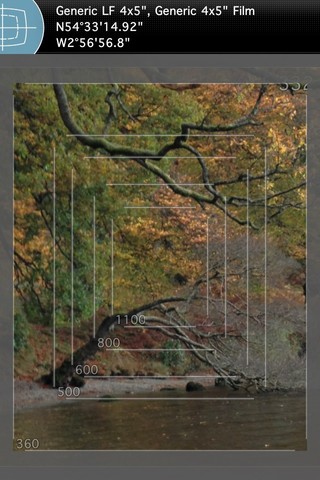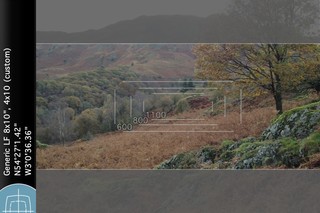Schneider lenses for the iPhone - whatever next?

Tim Parkin
Amateur Photographer who plays with big cameras and film when in between digital photographs.
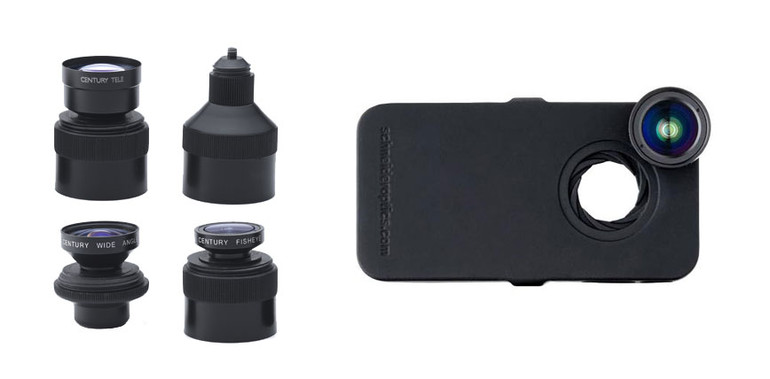
Whether you’re a fan of large format photography or not (I am, many think I’m nuts for it) one of the things that most large format photographers do that could arguably be beneficial to any photographer is the use of a ‘unwanted scenery exclusion device’ - normally a piece of card with a oblong hole in it. There is a better way though.. (at least for wide angles)
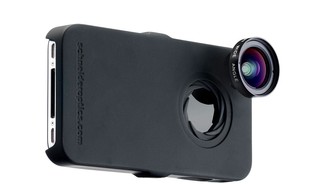
Large format photographers have to use these things because wandering around with a 4x5 or 8x10 camera up to your eye is a pin in the arse (and arm). However, once you’ve started using one it seems like such a good idea that you end up using one more regularly - even when shooting with a DSLR. Well, OK, not all the time when using a DSLR but if you’re composing using any other aspect ratio than 3x2 it’s a damned site easier to visualise then mentally blocking out 8.5% either side of your DSLR’s frame (and easier than making custom focussing screens using kitchen foil and double sided sticky tape - then again I’m an inveterate tinkerer and can’t help it). It’s also very useful if you use prime lenses and don’t want to carry a zoom around with you.
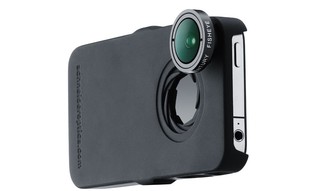
The only problem with your average black square wi’hole is that it only really works for standard lenses and a bit longer. Well to be accurate you can visualise wider lenses but you can only visualise them as if you were standing 1 foot away from a 30”x40” print from a 15mm lens. OK - I’m ballparking but hopefully you know what I mean - correct visual perspective only works from a single viewpoint and for most focal lengths that viewpoint is ‘OK’ but for wides and superwides the ‘correct’ viewpoint is rarely sensible.
I digress - no surprise there then. What can a photographer do? We really need a device that allows you to preview what wider angle lenses look like.
Well very recently we got a couple of devices that could help with this - the first is the compact camera, but most of these only go as wide as 28mm with the occasional 24mm using something like the Lumix LX5. The second is the iPhone - of which the latest version has a lens which is like a 30mm if you’re composing 4x5 ratio pictures - which makes it useful but not brilliant (equivalent to a 110mm lens).
However, if you’re trying to visualise for aspect ratios of 4x3 or skinnier, the lens is a 34mm equivalent lens e.g. I like to use the iphone to model 6x12 and 6x17 shots and 34mm is widish but no great shakes for those expansive views.
Fortunately Schneider, seeing the gap in the market for large format landscape photographers who want to visualise wide angle lenses, have created a nifty little add on lens kit that includes a wide angle lens and a fisheye lens (for those extreme wide angle, distortion friendly large format landscape photographers I presume).
In order to see how the lens system works I’ve put together a little video. In summary you get a new case for your phone that fits very snugly indeed and which has a bayonet style mount for itty, bitty little lenses. The lenses come in a fancy holder which doubles as a tripod adapter or handle. You’ll understand more when you look at the video.
So now you’ve got a wide angle lens, what does it give you. Well, the conversion factor for the lens is about 0.65x which makes the lens equivalents 22mm on a full frame DSLR and about 19mm if you are working with 4x5 aspect ratio (or 75mm - ish - for large format).
The fisheye gets you even wider but has the disadvantage of, well, being a fisheye. It’s useful for visualising the edges of panoramic formats but not really for visualising where things are within them (and hence not much use for visualising compositions).
This is all very well but there is one extra item that makes things very useful. DIRE studios have released an iPhone app that is just the thing for visualising pictures. The app is simply called ‘viewfinder’ and although it is very flexible, at heart it does a couple of things very well.
1) it overlays a mask onto the camera’s live view with the correct aspect ratio
2) it overlays a set of cropping lines for the different focal lengths you use
3) it allows you to zoom in and out and tells you the equivalent focal length for your camera
4) it can be configured so it knows about wide angle adapters so correctly shows focal length with them included.
Now obviously different people have different cameras and focal lengths. Fortunately the app has a huge amount of configuration options allowing you to pick the type of camera or size of sensor and a range of lenses that will be overlayed on the view. You can store four camera set-ups and swap between them quickly. You can also take quick ‘record’ shots.
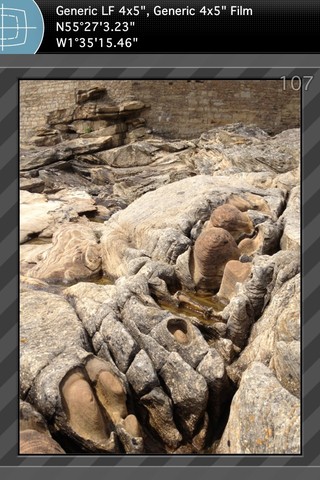
You can set this up with your D800 and a set of stunning primes and use the iPhone to wander the scene until you find the picture you want, knowing which prime you need to mount before you pick up the camera.
Back to the Schneider lenses though, what about the quality of the images themselves? Well they’re not what you’d consider to be ‘great’. They get dramatically softer in the corners if you look at even 25% views but they’re ‘acceptable’ for record shots - think pictorialism, not f/64. Have a look here for a standard and wide angle view.
I should probably add that there is another iPhone app that it’s good to know about - 645 Pro allows your iPhone camera to store uncompressed tifs instead of lossy jpgs. The images from the unadorned iPhone lens are quite amazing for a phone camera. When you look at the tifs when using the wide angle lens though, the quality of the result are revealed to be what you would expect from an external wide angle adapter.
But if you want a viewfinder for your iPhone, the combination of these two items works exceptionally well and in combination with simple ‘oblong holes in card’ give you a flexible and light way to visualise images before picking up your camera.
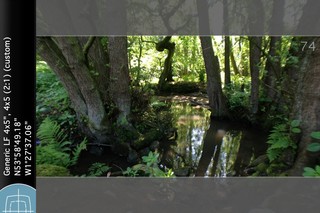 You can buy the lenses from the Schneider website for the not cheap price of $199 plus $65 shipping (which is ridiculous). This ends up at a couple of hundred pounds. If you know you are going to use it a lot or you are really into your iPhone photography then, yes, it might be useful but it's a lot of money to spend on something that might be redundant when the next iPhone comes out and it doesn't fit (although Schneider have said they'll try to make a new case that would work with it. They are available for sale over ebay but I can't vouch for the trustworthiness of the retailer - if you're happy to risk it the price comes down to about £150 including delivery.
You can buy the lenses from the Schneider website for the not cheap price of $199 plus $65 shipping (which is ridiculous). This ends up at a couple of hundred pounds. If you know you are going to use it a lot or you are really into your iPhone photography then, yes, it might be useful but it's a lot of money to spend on something that might be redundant when the next iPhone comes out and it doesn't fit (although Schneider have said they'll try to make a new case that would work with it. They are available for sale over ebay but I can't vouch for the trustworthiness of the retailer - if you're happy to risk it the price comes down to about £150 including delivery.
Recommended? Yes, maybe - they're the best wide angle adapters for the camera but not cheap. Would I buy it again? I think I would as I'm also using them for video but it wouldn't be an instant decision and I'd be pushing them for cheaper delivery options or go with the ebay retailer.
Here's another good review and you should probably know that there is a 2x lens that has just been announced but if you want to buy that as well, it still costs $65 dollars delivery on top of the $105 cost. Schneider really need to find a distributor in the UK.

